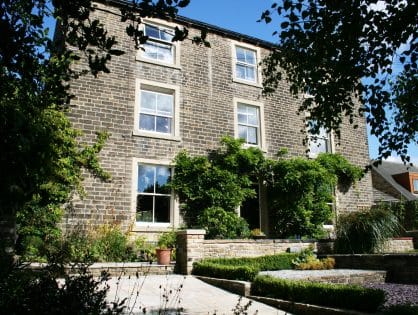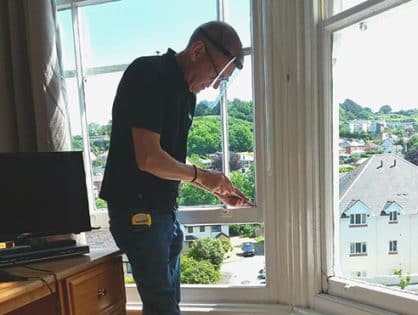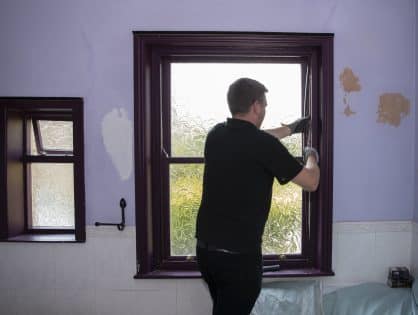Living in a conservation area – What are the rules when restoring your sash windows?
If you live in a conservation area, lucky you! A conservation area is a way to ensure that beautiful period details remain safe from modern redevelopment. Conservation areas protect places of architectural and historical interest for future generations to enjoy. These areas are great at keeping our historical isles full of character and beauty, but it does mean that there are certain restrictions on what you can do to develop and repair properties.
What is a Conservation area?
A conservation area is designated by the council’s local planning authority. It means that there are extra planning controls and considerations for the area. Mostly, these controls affect the outside of the property, but this can include trees, doors and windows.
If you are not sure if your house is in a conservation area, you can contact your local planning authority.
Preserving the Past: Conservation Areas in the UK and their Impact on Period Properties, Including Timber Windows
The United Kingdom is home to a rich tapestry of architectural history, boasting period properties that stand as a testament to the country’s cultural heritage. In an effort to safeguard these historical gems, conservation areas have been established, playing a crucial role in preserving the unique character and charm of neighbourhoods. This article explores the significance of conservation areas in the UK and their impact on period properties, with a particular focus on how regulations affect the maintenance and preservation of timber windows.
Conservation Areas: Preserving Cultural Heritage
Conservation areas are designated regions with unique architectural or historical significance, where special planning regulations are enforced to protect and enhance the character of the area. The aim is to ensure that any development or alteration respects the distinctive features that contribute to the area’s special character. Such features may include architectural styles, building materials, and the overall ambience of the neighbourhood.
Period Properties: Architectural Treasures
Period properties, such as Georgian, Victorian, and Edwardian houses, are integral to the cultural and architectural identity of the UK. These properties often feature distinctive design elements, including sash windows, intricate moulding, and ornate facades. The charm of period properties lies in their historical authenticity, and conservation areas play a pivotal role in maintaining this authenticity.
Timber Windows: A Window into the Past
Timber windows, commonly found in period properties, are a significant architectural feature that adds to the character of these homes. The craftsmanship involved in creating timber windows reflects the skill and attention to detail of bygone eras. These windows contribute to the overall aesthetic appeal of period properties and are often considered integral to their historical authenticity.
Conservation Area Regulations and Timber Windows
Conservation area regulations impact the maintenance and alteration of period properties, including timber windows. Property owners in these areas must adhere to specific guidelines when it comes to renovating or replacing windows. The regulations aim to strike a balance between preserving the historical integrity of the property and allowing for necessary maintenance.
- Window Material and Design: Conservation area regulations often specify the materials that can be used for windows. In the case of timber windows, property owners may be encouraged or required to repair rather than replace, ensuring the continued use of authentic materials that contribute to the historical character of the property.
- Design Consistency: Alterations to windows, including changes in design or size, are subject to scrutiny in conservation areas. Property owners must seek approval for such alterations to ensure they are in harmony with the overall character of the area.
- Listed Building Considerations: Period properties with timber windows that are also listed buildings face additional considerations. Listed buildings are of national importance, and any alterations, including changes to windows, require special permission.
Preserving Timber Windows: Balancing Conservation and Practicality
While conservation area regulations aim to protect the historical fabric of period properties, they also recognize the need for practical maintenance and improvement. Property owners are encouraged to use materials and techniques that are sympathetic to the original design while meeting modern standards of energy efficiency and functionality.
- Timber Window Repair: Rather than replacing timber windows, conservation guidelines often advocate for repair and restoration. Skilled craftsmen can address issues such as rot or decay, preserving the original windows while ensuring they remain structurally sound.
- Sustainability and Authenticity: When replacement is necessary, property owners are encouraged to choose sustainably sourced timber and maintain the design features that contribute to the authenticity of the property. This approach aligns with modern sustainability goals while respecting historical aesthetics.
Conservation areas in the UK play a vital role in preserving the nation’s architectural heritage. For period properties, including those with distinctive timber windows, these regulations provide a framework for responsible maintenance and development. By navigating the delicate balance between preservation and practicality, property owners contribute to the ongoing legacy of these architectural treasures, ensuring that future generations can continue to appreciate the charm and authenticity of the UK’s period properties.
Do I need planning permission to restore or replace sash windows in a conservation area?
The quick answer to this question is: if you are planning a radical redesign, then yes. You may find that it is not possible to make an obvious change to your windows.
Instead, it’s best to repair the sash windows sympathetically, keeping the existing frames or replacing them with VPPS.


What is VPPS?
VPPS is the Ventrolla Perimeter Sealing System. It is a beautiful sash window, built by the experts at Ventrolla, but without the leaky, draughty perimeters that are often associated with older sash windows. Using modern technology in a period-style frame, the historic beauty of the property is preserved, but the home is superbly insulated from draughts and moisture. As these designs are faithful to the original Georgian sash windows, no planning permission is necessary.


If you’d like more information about the VPPS in your conservation area home, contact our team for advice and a quote.

